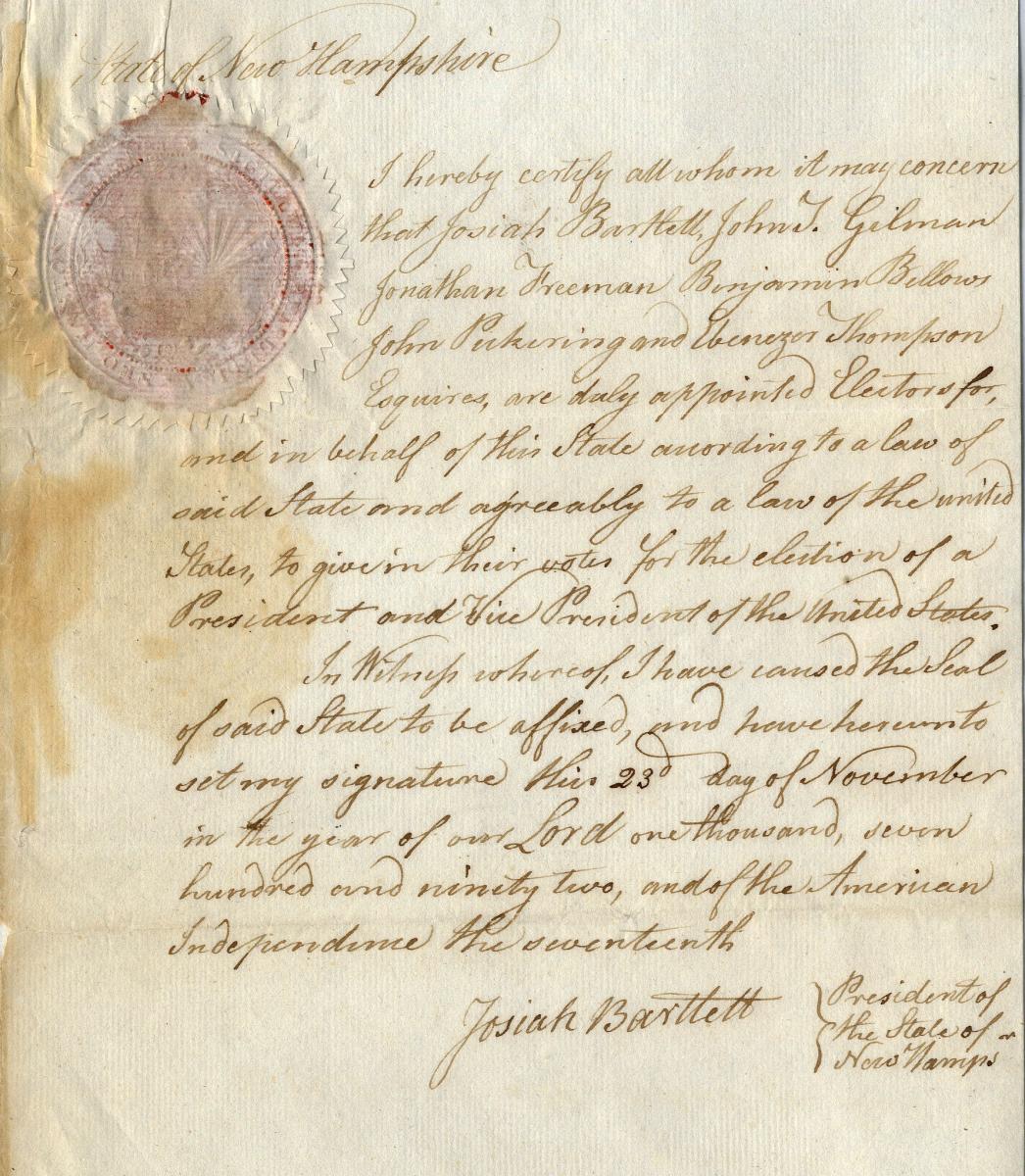
2024 Electoral College Press Kit
The Electoral College is the process that governs the election of the President and Vice President of the United States. This process is part of the Constitution. The term “electoral college” does not appear in the Constitution. Article II of the Constitution and the 12th Amendment refer to “electors,” but not to the “electoral college.” The processes of the Electoral College are established in Title 3 of the United States Code. The Office of the Federal Register (OFR), on behalf of the Archivist of the United States, administers the Electoral College process.
“As the nation’s record keeper, the National Archives plays an important nonpartisan administrative role in managing the Electoral College, stewarding states through the process, and ensuring that the Certificates of Ascertainment and the Certificates of Vote are properly received and shared with the public,”
The OFR, part of the National Archives and Records Administration, was created in 1935. It provides access to the official text of federal laws, Presidential documents, administrative regulations, and more, in addition to administering the Electoral College process. Through this work, the OFR helps inform citizens of their rights and obligations, documents the actions of federal agencies, and provides a forum for public participation in the democratic process.
The OFR's role in the Electoral College begins with sending instructions to the governments of the 50 states and the District of Columbia. Over the following months, the OFR will receive and review Certificates of Ascertainment and Certificates of Vote for facial sufficiency. Administrative staff from the House and Senate meet with OFR staff to inspect the Certificates of Vote in late December.
If any state’s certificate fails to reach the President of the Senate, the President of the Senate calls on the OFR to deliver duplicate originals in its possession to complete the set held by Congress. Congress meets in a joint session in the House of Representatives on January 6 to count the electoral votes.
After Congress has met in a joint session for the official counting of electoral votes, all Certificates of Ascertainment and Certificates of Vote remain available for public inspection at the OFR for one year and then are transferred to NARA for permanent retention.
For detailed information on the Electoral College, FAQs, and historical information, please see the Electoral College web pages.
Summary Timeline of Key Dates for 2024–25
- November 5, 2024: Election Day
- December 11, 2024: Deadline by which all states have issued Certificates of Ascertainment
- December 17, 2024: Electors vote in their states
- December 25, 2024: Deadline by which Certificates of Vote (electoral votes) arrive at their required destinations: Congress, NARA, the Secretary of State for the State that created them, and the Chief Judge for the Federal District court where the electors met.
- December 27, 2024: House and Senate staff meet with OFR staff to inspect the Certificates (tentative, assuming Congress not in session)
- January 6, 2025: Congress counts the electoral votes
- January 20, 2025: Inauguration Day
National Archives Resources
National Archives’ Electoral College website
Blog on the National Archives and the Electoral College
Blog on Amending the Electoral College: The 12th Amendment
Blog on the 1824 Presidential Election and the “Corrupt Bargain”
Additional Resources
For contact information and web addresses for the Secretary of State from each state and the District of Columbia, go to the National Secretaries of State website .
Are you a member of the media who would like more information on the Electoral College? For media inquiries, please contact the National Archives Public and Media Communications staff via email at public.affairs@nara.gov or by phone at 202-357-5300.
